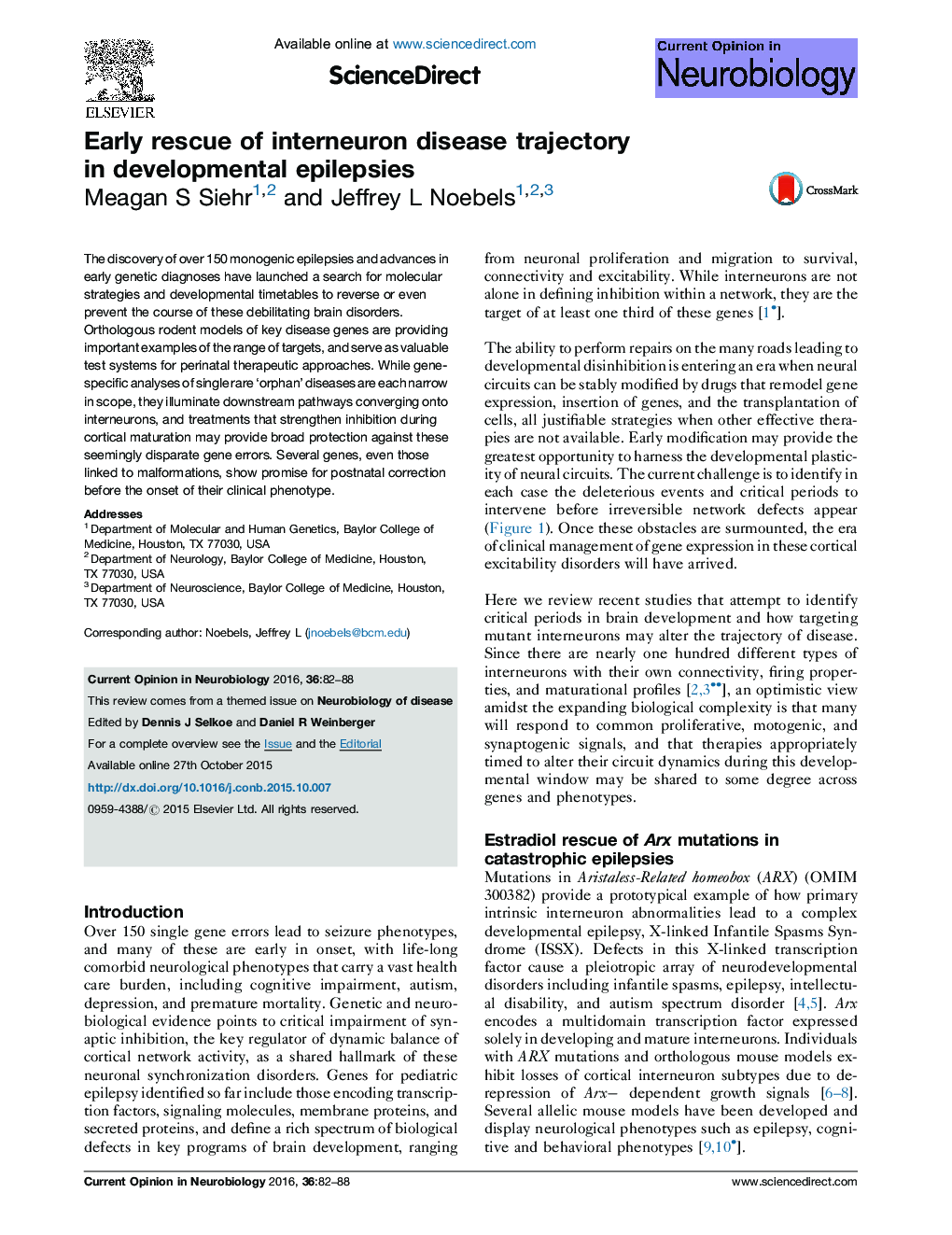| Article ID | Journal | Published Year | Pages | File Type |
|---|---|---|---|---|
| 6266282 | Current Opinion in Neurobiology | 2016 | 7 Pages |
â¢Interneuron defects are a common feature of monogenic epilepsies.â¢Major modifiable targets include migration, differentiation, and excitability.â¢Early intervention gene models include Arx, Dcx, Lis1, Tsc1, Pten, Kcna1, and Scn1a.â¢Brain developmental programs offer effective therapeutic targets for disease modification.
The discovery of over 150 monogenic epilepsies and advances in early genetic diagnoses have launched a search for molecular strategies and developmental timetables to reverse or even prevent the course of these debilitating brain disorders. Orthologous rodent models of key disease genes are providing important examples of the range of targets, and serve as valuable test systems for perinatal therapeutic approaches. While gene-specific analyses of single rare 'orphan' diseases are each narrow in scope, they illuminate downstream pathways converging onto interneurons, and treatments that strengthen inhibition during cortical maturation may provide broad protection against these seemingly disparate gene errors. Several genes, even those linked to malformations, show promise for postnatal correction before the onset of their clinical phenotype.
